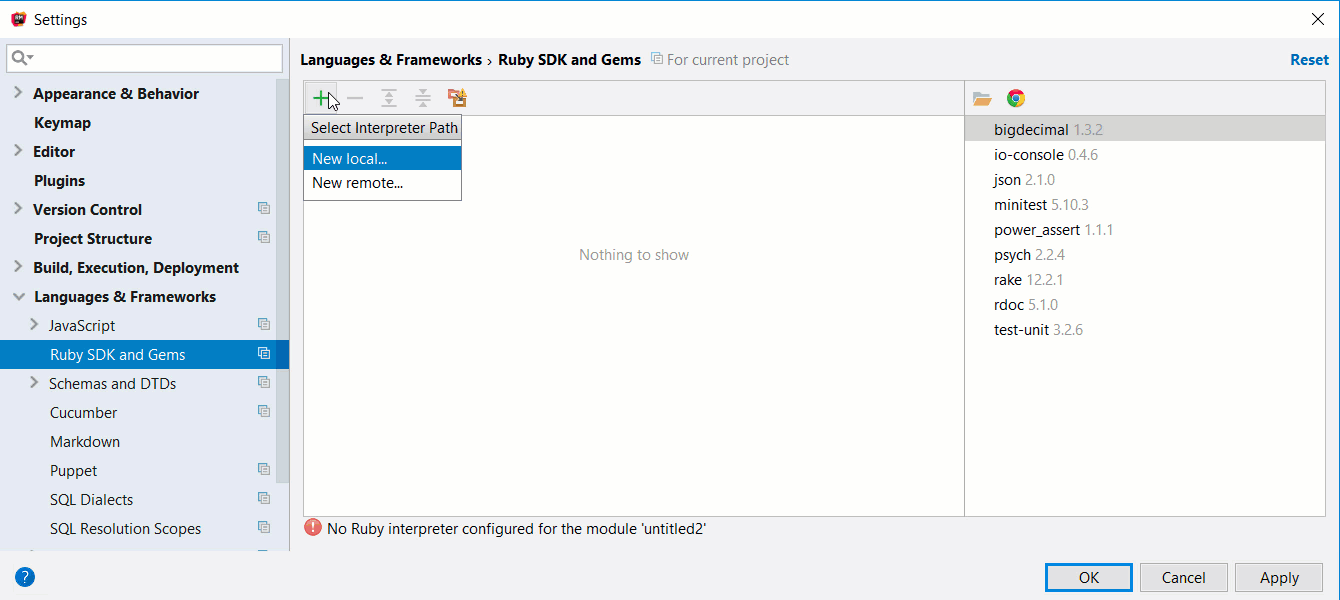

Reloading is triggered whenever changes are saved in the IDE, either automatically or using ⌘S / Ctrl+S, or when changes are made to a file externally. Now, it can also automatically reload the page opened in a browser in accordance with the changes you make to the corresponding HTML file or the linked CSS and JavaScript files. In the previous release, we’ve made it possible to preview HTML files in a browser using the built-in web server. Read on! User Experience Browser pages reload on save

This post describes the most promising updates of week one.
RUBYMINE WSL DOWNLOAD
You can download the EAP build from our website, get it from the free Toolbox App, or use snaps for Ubuntu.

Join the program to test these and other updates and share your feedback with us.
RUBYMINE WSL CODE
The first EAP version is now available, offering automatic browser page reload when you save changes in the IDE, Ktor integration, WSL 2 and Run Targets for Kotlin, correct code highlighting when file system refresh is running, Java updates, and more. Note that the id value should be unique.Welcome to our second Early Access Program this year! It will offer a glimpse of the new features that will be included in the upcoming IntelliJ IDEA 2021.2, in addition to introducing useful quality improvements. Open the %APPDATA%\JetBrains\\config\options\ file.Īdd the descriptor element and provide settings to access your custom distribution. This can be done by editing the configuration file created by RubyMine automatically after detecting WSL. RubyMine allows you to use custom Linux distributions run on WSL. In the Edit Project Path Mappings dialog, specify the local and remote project root paths: To do this, click the Edit Path Mappings button. (Optional) If you want to use the added SDK to debug a remote process, specify mappings between files of a local and remote project. Select the added SDK in the Ruby SDK and Gems page: (Optional) If you specified a path to the version manager executable in the previous dialog, RubyMine suggests selecting the Ruby interpreter used to run a remote application: In Ruby or version manager path, specify the path to the Ruby interpreter or the version manager executable. Open the Settings dialog Ctrl+Alt+S, go to the Language & Frameworks | Ruby SDK and Gems page.Ĭlick on the toolbar and select New remote in the drop-down: RubyMine allows you to use the remote Ruby interpreter installed on Windows Subsystem for Linux ( WSL and WSL 2) for your local projects. Open Windows PowerShell as Administrator and run In this case, you need to do the following: Upon the first launch, the system may prompt you to enable the Windows optional feature. Follow these instructions to switch the distributive. To work with WSL 2, your Windows version should be 10 build 18917 or later.
RUBYMINE WSL INSTALL
See the official guide Install the Windows Subsystem for Linux for instructions.
RUBYMINE WSL WINDOWS 10
Configure WSLĭownload and install a WSL distribution (for instance, Ubuntu) from Microsoft Store.įor this step, be sure to use at least Windows 10 or later with the latest “Fall Creators Update” (minimum version 1709, build 16299.15).

Currently, it supports several Linux distributions, such as Ubuntu, OpenSUSE, and SLES.įor better performance, we recommend using WSL as a remote interpreter and storing your project in the Windows file system instead of WSL. WSL ( WSL 2) - Windows Subsystem for Linux - is a compatibility layer for running Linux binary executables natively on Windows 10.


 0 kommentar(er)
0 kommentar(er)
